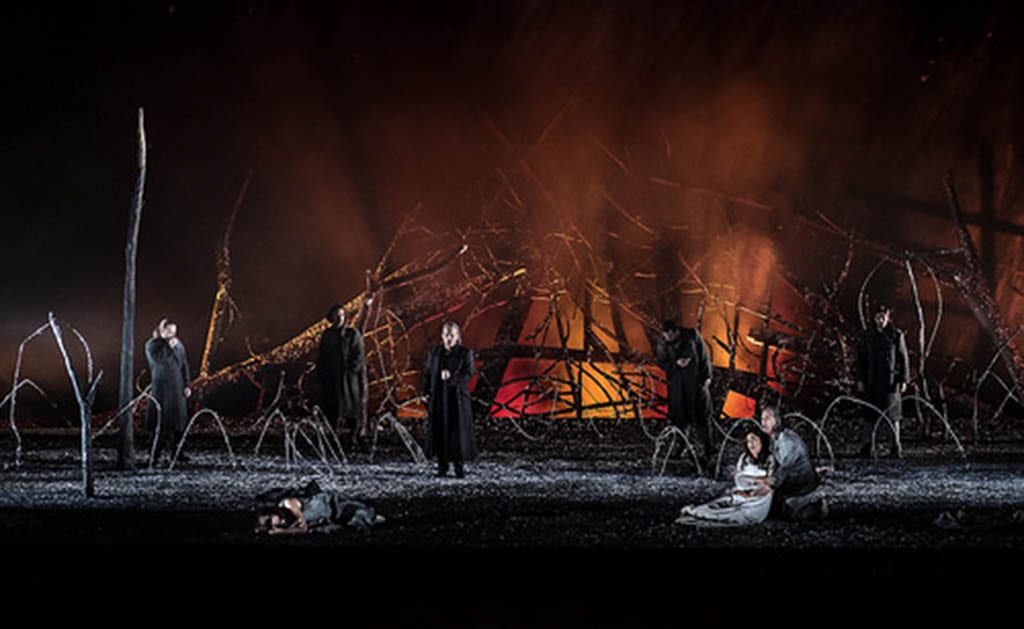If this is the first time you watch Il Trovatore, you will be enchanted by this Royal Opera House production. After all, it has the ingredients for a great show: music, drama, love, vengeance and fights. However, for those who have seen other versions this masterpiece by Verdi, Bösch’s revival may fail to impress.
When the curtain opens, a part of the story has already taken place. It is Ferrando, a captain in the Count di Luna’s army, who recounts his men and the audience of the day in which the Count’s infant brother Garzia mysteriously vanished. One day, an old gipsy woman was found by the baby’s cradle. Although she claimed she was only reading his future, Garzia fell ill and the woman was accused of witchcraft thus burnt at the stake. Her daughter, for revenge, abducted the Count’s brother and supposedly tossed him in her mother’s pyre.
Meanwhile, Leonora tells her friend Ines about a mysterious troubadour, Manrico, she has fallen in love with before the war. Count di Luna is also in love with Leonora and, hearing her talking to Ines, he sends his army to find his rival. In the duel, Manrico feels a supernatural force that impedes him to kill di Luna and returns to his gipsy village.
When the troubadour recounts the episode to his mother, Azucena tells him the story of the Count’s brother, revealing that she, in fact, was the old gypsy’s daughter. Blinded by rage and desperation she had, however, burnt her own child and spared the Count’s brother. The rivals in love are brothers and their destinies become forever entangled throughout in their duel for Leonora’s love.
A heart rendering yet surreal story, Il Trovatore is an opera that cannot go fully wrong. However, it is crammed with melodramatic dichotomies that Bösh managed to convey at times but without the appropriate intensity. The Count’s army become a group of fanatics around a tank and barbered wire and Manrico’s village a travelling fair. The graffiti on the walls are the straw that breaks the camel. Bösh’s attempt to read Il Trovatore in a modern key simply does not deliver the drama and passion intended by Verdi.
Of the four main performers, the two women are the only ones who fully manage to keep the audience enthralled. Anita Rachevelischvili’s extraordinary performance offers the public a scary and disturbed Azucena impossible to forget. Her voice, movements and expression simultaneously communicate to each and every member of the audience in an exquisite and compelling way. Maria Agresta (Leonora), on the other hand, does not blossom before the final act (Il supplizio) where she finally delivers the tragic and painful interpretation that a character like Leonora deserves.
Najmiddin Mavlyanov (Manrico) and Quinn Keseley’s (Count di Luna) voices are superb but their performances fail to touch the public’s heart. Mavlyanov and Keseley simply do not manage to convey the two very difficult characters, which are meant to represent the duel between good and evil, black and white, while merging into a desperate shadow of grey where it is difficult to understand who, in the end, is defeated. Nevertheless, with Verdi’s music beautifully executed by the Orchestra of the Royal Opera House, Il Trovatore is a treat to the ears.

